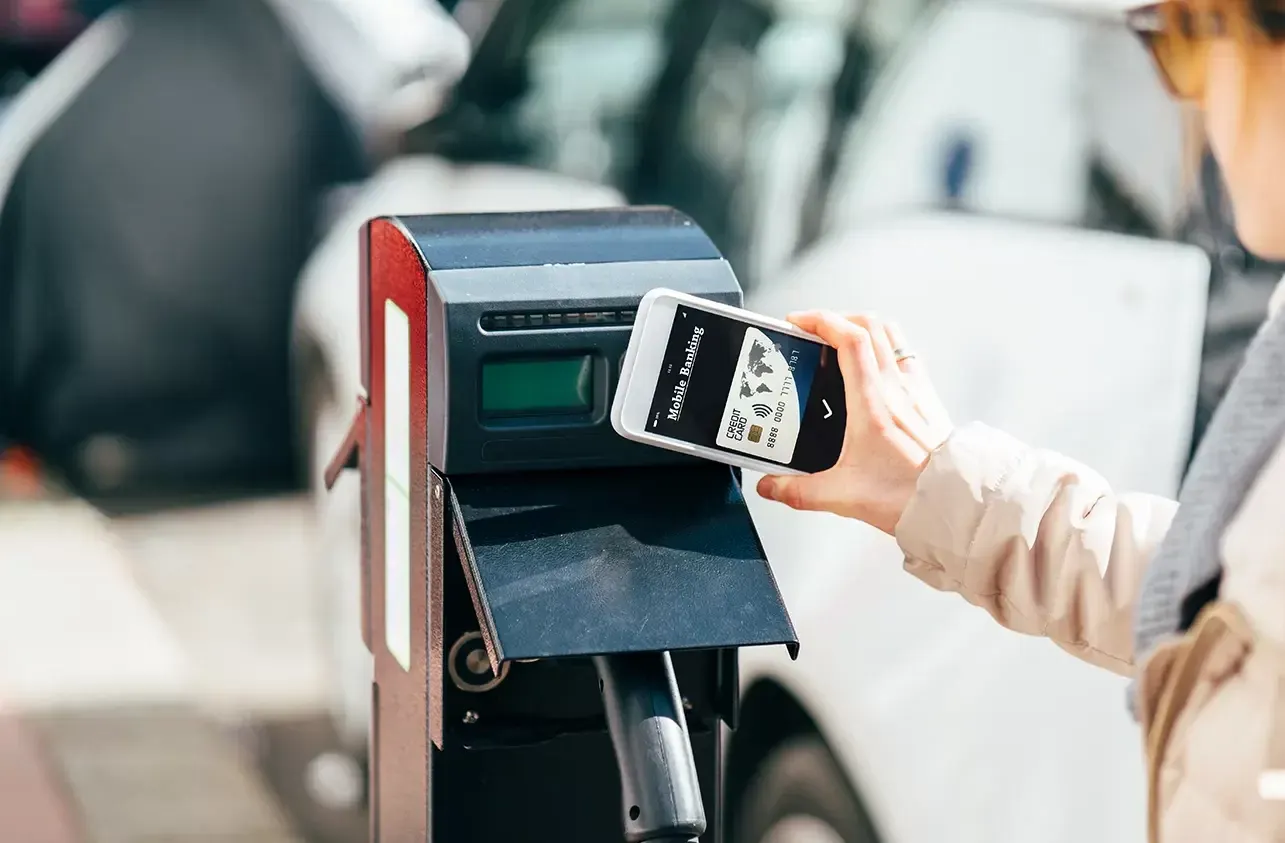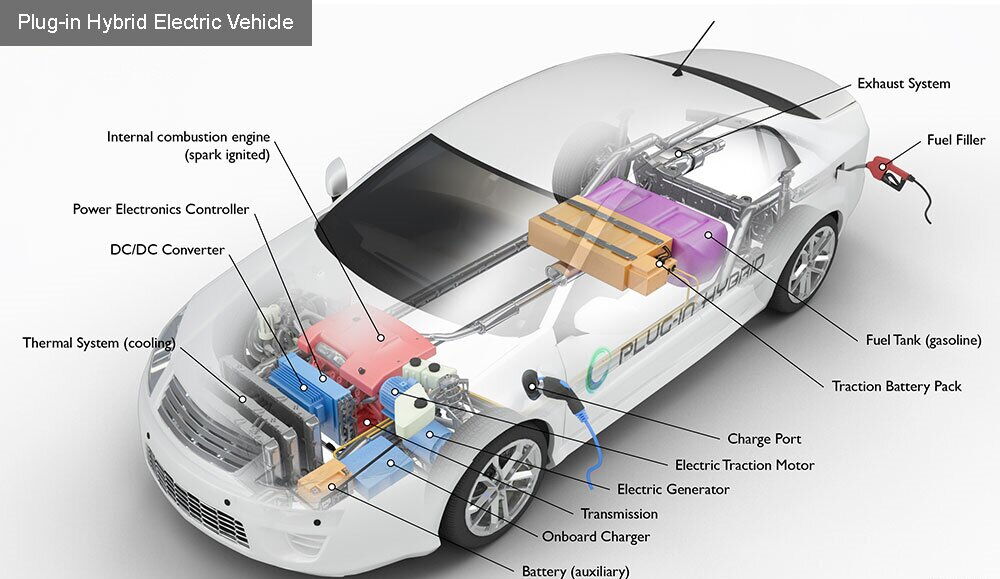The rise of electric vehicles (EVs) and hybrid models has changed the landscape of automotive transportation, and the plug-in hybrid electric vehicle (PHEV) has become an increasingly popular choice for those seeking a balance between traditional fuel power and the benefits of electric driving. While PHEVs combine a gasoline engine and an electric motor, allowing for more flexibility, charging these vehicles efficiently at home requires a reliable and powerful charging solution. Installing a home charging station—particularly a Level 2 charger—can significantly enhance the ownership experience, offering both convenience and cost savings. In this article, we will explore what a PHEV is, how to charge one, and the benefits of having a dedicated home charging station.

A plug-in hybrid electric vehicle (PHEV) is a versatile vehicle that combines the advantages of both traditional internal combustion engines (ICE) and electric motors. The powertrain in a PHEV typically consists of a gasoline engine, at least one electric motor, and a battery. This setup allows the vehicle to operate on electric power alone for short trips or until the battery is depleted, at which point the gasoline engine kicks in to provide additional power.
The benefit of the PHEV system is that it offers the best of both worlds: it allows you to enjoy electric driving for local trips without the range anxiety commonly associated with full electric vehicles (EVs). When the electric charge runs out, the gasoline engine takes over, ensuring that you can continue your journey without worrying about finding a charging station. Moreover, PHEVs utilize regenerative braking to recharge the battery, making them more efficient compared to traditional combustion vehicles.
While PHEVs are similar to EVs in many ways—particularly in that they rely on an electric motor and battery for propulsion—the key difference is that PHEVs have the ability to run on gasoline as well. This dual power option makes them practical for a wide range of driving scenarios.

Charging a plug-in hybrid is straightforward and similar to recharging your smartphone or other electronic devices. To charge your PHEV, you need to:
The most common home charging option is Level 1 charging, which uses a standard 120-volt outlet. This can be done in your garage, carport, or anywhere there is a standard power socket.
Open your vehicle’s charging cover and plug the charger into the car’s charging port. Once connected, the vehicle will begin the charging process automatically.
The car’s dashboard will typically display the charging status, and once it’s fully charged, you’re ready to hit the road again.
Charging units are built for longevity, typically lasting 10,000 charge cycles, or about 30 years if charged once a day. These chargers are also designed with safety features, including the ability for your vehicle to detect if the charger is still connected—helping you avoid driving off with the charger still plugged in.
When it comes to home charging, there are two primary options: Level 1 and Level 2. Both are useful, but each comes with its own set of advantages and limitations.
Level 1 charging uses a standard 120-volt electrical outlet, which is typically found in most homes. It’s the simplest and most convenient option, requiring no special installation beyond a regular power socket. However, there are trade-offs:
Level 1 charging is much slower than Level 2. It typically takes 6-8 hours to fully charge a PHEV with a Level 1 charger, depending on the vehicle’s battery size.
Since most homes have 120-volt outlets, Level 1 charging is accessible anywhere you park your car at home, making it a good option for those who don’t need to charge quickly.
Level 1 charging is ideal for those who drive short distances daily and can leave the car plugged in overnight. However, for those who need faster charging times, Level 2 charging is the better solution.
Level 2 charging requires a 240-volt outlet, which is similar to the outlet used for large appliances such as dryers. While it typically requires professional installation, the benefits are well worth the investment.
The main advantage of Level 2 is its speed. A Level 2 charger can fully recharge most PHEVs in 3-4 hours, depending on the vehicle’s battery capacity. This makes it ideal for overnight charging, ensuring that your PHEV is ready for the next day’s journey.
Installing a Level 2 charger generally requires an electrician to run a dedicated 240-volt line to your garage or parking area. Many homeowners find this investment worthwhile due to the significant reduction in charging time.
While public charging stations are available, owning a home charging station provides several compelling benefits for PHEV owners.
Having a dedicated home charging station means you can charge your PHEV overnight, ensuring that it’s fully charged and ready to go when you need it. No more trips to the public charging station or waiting for available chargers—simply plug in at home, and your vehicle will be ready by the morning.
Level 2 chargers are significantly faster than Level 1 chargers. For PHEV owners who rely on electric driving for daily commutes, having a Level 2 charger at home can make a huge difference. Instead of waiting hours to charge with Level 1, you can recharge in a fraction of the time, making it much more efficient, especially if you have a busy schedule.
Charging your PHEV at home can save you money compared to using public charging stations. While some public stations may offer free charging, many charge fees for use, especially fast-charging stations. By charging at home, you can take advantage of lower electricity rates, which are generally cheaper than the fees charged at public stations.
One of the main reasons for driving a PHEV is to reduce your environmental footprint. Charging your vehicle at home, especially using renewable energy sources such as solar panels, can further minimize your carbon emissions. When combined with a green energy plan, a home charging station allows you to power your PHEV with clean energy, significantly reducing the impact of your daily commute.
As more people adopt electric vehicles, the demand for home charging stations is growing. Installing a Level 2 charger at home could increase the value of your property, especially if you live in an area where EVs and PHEVs are becoming more common. Prospective buyers may view a dedicated charging station as a valuable feature, making your home more attractive on the market.
When you own a home charging station, you have full control over your charging habits. You can choose when to charge, how long to charge, and how often to charge, all from the comfort of your home. With some smart charging stations, you can even monitor and adjust your charging preferences via a mobile app, allowing for even greater flexibility.
For PHEV owners, a home charging station—especially a Level 2 charger—offers numerous advantages in terms of convenience, cost savings, and faster charging times. By charging your vehicle at home, you avoid the hassle of finding public charging stations and ensure that your car is ready to go when you need it. Additionally, with the increasing popularity of electric and hybrid vehicles, having a dedicated charging station can enhance your home’s value and environmental sustainability.
If you are considering a PHEV or already own one, installing a Level 2 home charging station is a smart investment that will enhance your driving experience, save you time, and keep your vehicle running efficiently for years to come.